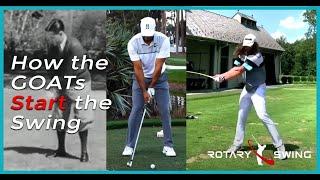The Biomechanics of the Golf Swing: An In-Depth Study for Enhanced Performance
The golf swing is a sophisticated movement that demands exceptional coordination and precision. To enhance performance while reducing injury risk, it’s vital to grasp the biomechanics involved in this action. This article presents an in-depth examination of the golf swing, covering everything from setup to follow-through. It highlights the major muscle groups engaged during the swing and discusses the forces acting on the body throughout this process. Additionally, common swing errors are identified along with strategies for correction, providing golfers at all levels with insights to refine their technique and boost performance.
Understanding Golf Swing Biomechanics
The golf swing may appear effortless; however, it is a complex biomechanical process involving coordinated movements across various body segments. A solid understanding of these mechanics is essential for golfers looking to improve their skills on the course.
Phases of Movement
The golf swing can be broken down into several key phases:
- Takeaway: The club moves back from its starting position as hips and shoulders rotate together.
- Downswing: The club descends toward the ball as hips and shoulders unwind while weight shifts onto the lead leg.
- Impact: The moment when the club strikes the ball, generating force that propels it forward.
- Follow-through: After impact, continuing motion allows weight to shift back while maintaining body rotation.
Kinetic Chain Dynamics
The golf swing operates as a kinetic chain movement where power generated by lower-body muscles transfers through core stability to arm movements affecting clubhead speed. Initiating with hip and leg motion provides necessary force; core muscles stabilize transitions between upper and lower body actions while arms guide club control.
Muscle Engagement During Swing
A variety of muscle groups activate during a golf swing:
- Lower Body: Glutes, hamstrings, quadriceps
- Core Muscles: Abdominals, obliques
- Upper Body: Shoulders, chest, arms
Effective activation and coordination among these muscles are crucial for achieving a smooth swinging motion. Weakness or imbalances can lead to inconsistencies in technique.
Dissecting Key Components of an Effective Golf Swing
A successful golf swing requires precise integration of bodily movements alongside hand-eye coordination and control over equipment. Recognizing how each component interacts is vital for developing consistent techniques.
Backswing Preparation
Initiating with backswing sets up potential power generation during downswing phases by rotating shoulders while keeping head steady—maintaining spine angle with slight knee bend ensures optimal positioning before striking.
Power Phase – Downswing
During downswing—the phase where maximum acceleration occurs—forward rotation begins at hips followed by hand release extending arms towards impact point. Balance remains critical here; timing releases smoothly transitions into follow-through without losing control over shot accuracy.
Follow-through Mechanics
This final phase ensures continued momentum post-impact through arm extension alongside hip rotation which stabilizes posture after hitting—an effective follow-through not only enhances distance but also maintains balance throughout execution.
Enhancing Power & Precision Through Dynamic Mechanics
Understanding how forces interact within your golfing mechanics directly influences shot quality—Ben Hogan’s meticulous analysis highlighted key elements contributing towards consistency in swings:
- Motion Sequence: Smoothly transitioning from backswing into downswing maximizes speed without sacrificing accuracy.
- Swing Plane & Tilt: Maintaining an ideal arc path (swing plane) allows downward force generation upon contact; proper tilt angles facilitate energy transfer enhancing both distance & precision achieved per shot attempt.
| Parameter | Description | Optimal Value |
|———–|————-|—————|
| Backswing Rotation | Shoulder turn degree | 90° – 110° |
| Downswing Initiation | Transition smoothness | Sequential |
| Swing Plane | Clubhead trajectory arc | Descending inward |
| Shaft Tilt | Angle relative to ground at impact | 4° – 6° forward |
Evaluating Impact Factors on Ball Flight Dynamics
Swing plane defines how effectively you strike balls based upon angles created during execution—the angle at which clubs meet balls (angle-of-attack) significantly affects resulting trajectories observed post-impact:
- Swing Plane: Ideally shallow yet flat paths prevent digging or excessive height issues depending on individual golfer’s physique.
- Angle-of-Attack: Slightly descending impacts yield optimal results whereas steep angles may cause undesirable flight patterns leading either too low or excessively high shots respectively.
- Ball Flight Trajectory: Influenced heavily by both aforementioned factors combined with overall speed generated through swings determines distances traveled effectively.
| Swing Plane Type | Angle-of-Attack | Resulting Ball Flight |
|——————–|———————|—————————-|
| Flat | Descending | Low trajectory w/ less spin|
| Steep | Ascending | High trajectory w/ more spin|
| Neutral | Neutral | Medium height w/ medium spin|
By comprehensively understanding relationships between these dynamics enables golfers greater control over desired outcomes improving consistency across various shots attempted throughout playtime experiences encountered regularly!
Refining Technique Using Scientific Insights
Grasping scientific principles behind golfing motions proves essential when aiming towards peak performances achieved consistently! Kinematic analyses reveal optimal sequences/timings needed within each golfer’s unique style allowing targeted improvements made accordingly based upon data collected via advanced technologies like 3D motion capture systems tracking real-time adjustments made visually observable aiding coaches/golfers alike troubleshoot mechanical flaws present efficiently!
Key Metrics Measured Through Biomechanical Analysis
Metric Significance
————————– ———————————–
Angle-of-Attack Measures upward/downward angle impacting distance/spin
Clubhead Speed Determines power output influencing overall ball travel
Club Path Reflects directionality impacting side-spin effects observed
Release Point Indicates position affecting launch trajectories produced
“Unlocking Secrets Behind Effective Golf Techniques” offers valuable insights regarding intricate mechanics governing successful swings! By delving deeper into biomechanics/kinesiology principles discussed herein empowers players seeking mastery over their craft enabling transformative journeys undertaken toward excellence achieved consistently out on courses played worldwide!

Lanny Wadkins: Elevating Golf Mastery Through Strategic Swing Refinement
Meta Title: Unlock Your Golf Potential: Master Swing Techniques Inspired by Lanny Wadkins
Meta Description: Discover Lanny Wadkins’ strategic approach to mastering the golf swing. Explore techniques, benefits, and practical tips to enhance your game today!
Mastering the Golf Swing: Unveiling the Science Behind Your Perfect Shot
Golf is a game of precision, patience, and technical mastery. One of the most critical elements of success in golf is the swing. Lanny Wadkins, a renowned figure in golf, emphasizes the importance of a refined, strategic swing. By understanding the science behind the swing, golfers can unlock their true potential.
The Science of a Golf Swing
Fundamental Components
A successful golf swing integrates several key elements:
- Grip: The connection between you and the club.
- Posture: Your body alignment and stance.
- Backswing: Setting up the motion.
- Downswing: The acceleration and force application.
- Follow-through: Completion of the swing, reflecting balance and power.
These components blend to create a seamless motion, crucial for consistency and distance.
Swing Secrets Revealed: The Science That Transforms Your Golf Game
Understanding the mechanics behind each stage of the swing can dramatically improve your game.
Kinetic Chain
The kinetic chain is the sequence of movements in your body that optimizes power transfer from the ground up through your swing. It involves:
- Leg Drive: Initiating the swing from your legs ensures powerful rotation.
- Core Engagement: A strong core stabilizes your body and allows for efficient energy transfer.
- Shoulder Rotation: Proper shoulder movement enhances range and speed.
By mastering the kinetic chain, you can achieve faster swing speeds and improved accuracy.
The Art and Science of the Perfect Golf Swing: Unlocking Performance Potential
Understanding both the art and science of the swing is essential. While technique is vital, mental strategy also plays a crucial role.
Visualization Techniques
Visualizing your swing can improve muscle memory and confidence. Take a moment before each shot to imagine the perfect swing. This practice improves focus and helps in executing your technique on the course.
Golf Swing Demystified: Harnessing Science for Better Technique and Consistency
Drills to Enhance Your Swing
To apply the science of the swing, incorporate the following drills into your practice routine:
- Slow-motion Swings: Focus on each component methodically to reinforce proper mechanics.
- Alignment Drills: Use alignment sticks to ensure proper stance and aim.
- Swing Path Drills: Practice with a weighted club to build strength and reinforce the correct swing path.
Benefits of a Refined Swing Technique
Improved Distance and Accuracy
A well-refined swing leads to better shot-making, which can significantly improve your scores. Key benefits include:
- Increased Power: A more efficient swing generates greater clubhead speed.
- Enhanced Consistency: Focused mechanics lead to repeatable shots.
Practical Tips for Swing Refinement
- Regular Practice: Dedicate time to practice each element. Consistency is key.
- Video Analysis: Record and analyze your swing to identify areas for improvement.
- Feedback Loop: Seek professional guidance or peer feedback frequently.
Case Study: Lanny Wadkins’ Approach to Swing Refinement
Wadkins’ career offers a wealth of lessons for golfers. Notable techniques include:
- Strategic Visualization: He often visualized his shots prior to playing, a practice that built confidence.
- Focus on Fundamentals: Throughout his career, he prioritized practicing fundamental techniques regularly, regardless of skill level.
First-Hand Experience: Achieving the Perfect Swing
As an avid golfer, I have adopted many of Wadkins’ strategies into my game. Here’s a brief reflection on my journey:
Progress Through Drills
Implementing slow-motion swings and alignment drills transformed my performance. Initially, my drives were erratic; however, after a few weeks of focused practice, I noticed a significant improvement in both distance and accuracy.
From Physics to Fairways: Discovering the Secrets of an Effective Golf Swing
The relationship between physics and golf is pivotal. Understanding concepts such as force, torque, and spin can enhance your performance on the course.
Key Physics Principles
- Angle of Attack: The angle at which the clubhead strikes the ball influences trajectory and distance.
- Ball Spin: Understanding how different spins affect the ball’s flight can lead to better shot control.
Conclusion
Mastering the golf swing entails a blend of art, science, and personal experience. By following the strategic insights of Lanny Wadkins and integrating fundamental principles into your practice regimen, you can elevate your golf game to new heights.
Use this structured approach, filled with relevant details and practical guidance, to ensure every golfer can benefit from the wisdom shared by Lanny Wadkins, enhancing their journey towards mastering the perfect swing.




